Premium Only Content

CIA Archives: President Richard Nixon's Trip to China (1972)
The dark side of history: https://thememoryhole.substack.com/
The 1972 visit by United States President Richard Nixon to the People's Republic of China was an important strategic and diplomatic overture that marked the culmination of the Nixon administration's resumption of harmonious relations between the United States of America and the People's Republic of China after years of diplomatic isolation.[1] The seven-day official visit to three Chinese cities was the first time a U.S. president had visited the PRC; Nixon's arrival in Beijing ended 25 years of no communication or diplomatic ties between the two countries and was the key step in normalizing relations between the U.S. and the PRC. Nixon visited the PRC to gain more leverage over relations with the Soviet Union, following the Sino-Soviet split. The normalization of ties culminated in 1979, when the U.S. established full diplomatic relations with the PRC.
When the Chinese Communist Party gained power over mainland China in 1949 and the Kuomintang retreated to the island of Taiwan after the de facto end of the Chinese Civil War, the United States continued to recognize the Republic of China (ROC) as the sole government of China, now based out of Taipei. Before his election as president in 1968, former Vice President Richard Nixon hinted at establishing a new relationship with the PRC. Early in his first term, Nixon, through his National Security Adviser Henry Kissinger, sent subtle overtures hinting at warmer relations to the government of the PRC. After a series of these overtures by both countries, Kissinger flew on secret diplomatic missions to Beijing in 1971, where he met with Chinese premier Zhou Enlai. On July 15, 1971, the President announced on live television that he would visit the PRC the following year.[2]
The week-long visit, from February 21 to 28, 1972, allowed the American public to view images of mainland China for the first time in over two decades. Throughout the week the President and his senior advisers engaged in substantive discussions with the PRC leadership, including a meeting with CCP chairman Mao Zedong, while First Lady Pat Nixon toured schools, factories and hospitals in the cities of Beijing, Hangzhou and Shanghai with the large American press corps in tow. Nixon dubbed his visit "the week that changed the world", a descriptor that continues to echo in the political lexicon. Repercussions of the Nixon visit continue to this day; near-immediate results included a significant shift in the Cold War balance, driving an ideological wedge between the Soviet Union and the People's Republic of China, resulting in significant Soviet concessions and its eventual fall.
The consequences of Nixon's trip to China continues to impact politics today. Writing on the 40th anniversary of the trip, Jeffrey Bader said that the basic bargain to put common interests ahead of ideology and values which both Nixon and Mao sought had been substantially held by both the Democratic and Republican parties.[3] Also, a "Nixon to China" moment has since become a metaphor to refer to the ability of a politician with an unassailable reputation among their supporters for representing and defending their values to take actions that would draw their criticism and even opposition if taken by someone without those credentials.[3]
Visit
Historical background
Nixon flies to China on Air Force 1.
Improved relations with the Soviet Union and the PRC are often cited as the most successful diplomatic achievements of Nixon's presidency.[4] After World War II, Americans saw relations between the United States and the Soviet Union deteriorating, the Soviets consolidating communist allies over much of Eastern Europe, and the potential victory of CCP forces in the Chinese Civil War.[citation needed] The American ruling class was concerned that communists might dominate schools or labor unions.[5]
In China, from the beginning of the Sino-Soviet split in 1956, there was a perceived necessity for external allies to counterbalance the power of the Soviet Union.
The reason for opening up China was for the U.S. to gain more leverage over relations with the Soviet Union. Resolving the Vietnam War was a particularly important factor. National Security Council staffer (and later U.S. Ambassador to China) Winston Lord noted that, by flexibly dealing with both the Soviet Union and China, the United States sought to pressure both countries to reduce their support for North Vietnam in their new prioritization of relations with the United States.[6]
One of the main reasons Richard Nixon became the 1952 vice-presidential candidate on the Dwight Eisenhower ticket was his strong anti-communist stance. Despite this, in 1972 Nixon became the first U.S. president to visit mainland China while in office.[7] Ulysses S. Grant visited China on a world tour after leaving office, meeting Prince Gong and Li Hongzhang.[8] Two decades before becoming president Herbert Hoover lived in China as a mining manager from 1899 to 1901,[9] being also somewhat proficient in Mandarin.[citation needed] Eisenhower made a state visit to Taiwan in 1960, during the period when the United States recognized the Republic of China government in Taipei as the sole government of China.[10]
Readiness
In July 1971, President Nixon's National Security Advisor Henry Kissinger secretly visited Beijing during a trip to Pakistan, and laid the groundwork for Nixon's visit to China. This meeting was arranged and facilitated by Pakistan through its strong diplomatic channels with China.[11][12] Transcripts of White House meetings and once confidential documents show Nixon began working to open a channel of communication with Beijing from his first day in the White House.[13] For this ambitious goal to be reached President Nixon had carried out a series of carefully calibrated moves through Communist China's allies Romania and Pakistan.[14]
On 15 July Nixon announced, to the public's surprise, that he would visit China.[15]
Travel to China
Air Force One landing in Beijing on February 21, 1972.
American staff were surprised by the small crowd at the welcoming reception.[16]
President Nixon, his wife, and their entourage left the White House on February 17, 1972, spending a night in Kaneohe Marine Corps Air Station, Oahu, Hawaii. They arrived the next day in Guam at 5 pm, where they spent the night at Nimitz Hill, the residence of the Commander, Naval Forces, Marianas. The next morning, February 21, at 7 am the Nixons left Guam for Shanghai. After four hours in the air, the Nixons arrived in Shanghai. From Shanghai, the Nixons traveled to Beijing.[17]
Meeting with Mao
Nixon shakes hands with Chinese leader Mao Zedong.
From February 21 to 28, 1972, U.S. President Richard Nixon traveled to Beijing, Hangzhou, and Shanghai. Almost as soon as the American president arrived in the Chinese capital, CCP Chairman Mao Zedong beckoned him for a quick meeting. Kissinger and his assistant Winston Lord were also present. To avoid embarrassing Secretary of State William P. Rogers, Nixon requested to the Chinese for Lord to be cropped out of all the official photographs of the meeting.[18][16]
Unknown to Nixon and the rest of the American diplomats at the time, Mao was in poor health and he had been hospitalized for several weeks up to only nine days before Nixon's arrival. Nevertheless, Mao felt well enough to insist to his officials that he would meet with Nixon upon his arrival. Upon being introduced to Nixon for the first time, Mao, speaking through his translator, said to Nixon: "I believe our old friend Chiang Kai-shek would not approve of this". Mao also joked that "I voted for you during your last election."[19] Nixon, charmed, said "you voted for the lesser of two evils," and Mao replied, "I like rightists, I am comparatively happy when these people on the right come into power."[20][21]
Richard and Pat Nixon with Chinese delegates at the Great Wall
As an observer of the Mao–Nixon meeting, Lord noted Mao's peasant-like sensibilities and self-deprecating humor. Mao spoke simply and inelegantly, but clearly communicated approval of the visit and its diplomatic utility. Lord described Mao's purposeful and episodic language as a "very skillful performance."[6]
Other activities
Pat Nixon in Beijing
Nixon held many meetings with Chinese Premier Zhou Enlai during the trip, and made visits to the Great Wall, Hangzhou, and Shanghai. Nixon's porcelain swans statue, a gift to Mao, was presented along the way in the gift-giving ceremony.[22]
Nixon concluded his visit on the morning of February 28, when he left China on a flight to Anchorage, Alaska.[23]
Results
Richard Nixon and Zhou Enlai speaking at a banquet at the Great Hall of the People
February 27 marked the joint issuing of the Shanghai Communiqué, in which both nations pledged to work toward the full normalization of diplomatic policy and acknowledged longstanding differences over Taiwan. The statement allowed the U.S. and PRC to temporarily set aside the "crucial question obstructing the normalization of relations"[24] concerning the its political status in order to open trade and other contacts. However, the U.S. continued to maintain official relations with the government of the Republic of China in Taiwan and did not break off until 1979, when the U.S. established full diplomatic relations with the PRC.
While in Shanghai, Nixon spoke about what this meant for the two countries in the future:
This was the week that changed the world, as what we have said in that Communique is not nearly as important as what we will do in the years ahead to build a bridge across 16,000 miles and 22 years of hostilities which have divided us in the past. And what we have said today is that we shall build that bridge.[25]
Within a year after Nixon's visit, a number of U.S. allies including Japan, Great Britain, and West Germany broke relations with Taiwan in order to establish diplomatic ties with China.[26]
Aftermath
Nixon and his aides carefully planned the trip to have the biggest possible impact on television audiences in the United States. The media coverage of the trip was overwhelmingly positive and presented Nixon communicating with Chinese government officials, attending dinners, and being accorded tours with other people of influence. Later interviews with correspondents who traveled with the President show how eager they were to be on the trip, which some labeled the most important summit meeting ever.[27] Max Frankel of The New York Times received the Pulitzer Prize for International Reporting for his coverage of the event.[27]
The aftermath of the Watergate scandal later in 1972 led Nixon to deprioritize further diplomatic efforts with the PRC.[28] This resulted in putting off deliberations over the establishment of a hotline between DC and Beijing, which was first proposed during the visit to China and discussed between Kissinger and Zhou in November 1973 meetings.[29] The Beijing-Washington hotline was later created in 2007.
The visit inspired John Adams' 1987 opera Nixon in China. It was also the subject of a PBS documentary film, American Experience: Nixon's China Game.
Nixon's visit played a role in leading to the September 1972 Japan–China Joint Communiqué.[30][31] In his discussion with Japanese PM Kakuei Tanaka, Mao Zedong recounted, "I told Nixon, 'I voted for you when you ran for President. You still don't know.'" Mao said that he had no interest in Japan's Communist Party, and "also voted" for Kakuei Tanaka.[32]
Nixon's visit played a role in opening China to U.S. trade eventually putting downward pressure on U.S. inflation.[33]
As prospects of China-U.S. rapprochement improved following the visit, China's focus on its Third Front campaign to develop basic and heavy industry in its rugged interior gradually declined.[34]: 4, 225–229 Rapprochement between the United States and China decreased the fear of invasion which, along with fears of Soviet invasion, had motivated the Third Front construction.[34]: 4 [35]: 180
In 1979, there was a state visit by Deng Xiaoping to the United States from January to February, the first official visit to the U.S. by a senior leader of the P.R.C.[36] Deng met with then-sitting President Jimmy Carter and ex-President Nixon at a state dinner in the White House.[37][38]
See also
Nixon goes to China
Nixon in China, opera based on the historical visit
Ping-pong diplomacy
Dixie mission
Visit by Deng Xiaoping to the United States
General:
China and the United Nations
References
Hughes, Ken (October 4, 2016). "Richard Nixon: Foreign Affairs". millercenter.org. Archived from the original on April 17, 2017.
"This Day in History, July 15, 1971". HISTORY. A&E Television Networks. 14 July 2020. Retrieved 7 June 2022.
Bader, Jeffrey A. (February 23, 2012). "China and the United States: Nixon's Legacy after 40 Years". Brookings. Retrieved December 1, 2021.
Joan Hoff. Nixon Reconsidered (New York, NY: BasicBooks, 1994): 182.
"Labor's Communists Come Under Fire". Life. Vol. 22, no. 12. Time. March 24, 1947. pp. 31–35. ISSN 0024-3019.
Kennedy, Charles S. (April 28, 1998). "Nixon Goes to China". The Association for Diplomatic Studies and Training: Foreign Affairs Oral History Project. Retrieved February 21, 2013.
Stephen E. Ambrose. Nixon, the Triumph of a Politician 1962–1972 (New York, NY: Simon and Schuster, 1989): 439.
"Ulysses S. Grant: International Arbitrator (U.S. National Park Service)". www.nps.gov. Retrieved December 31, 2021.
"Years of Adventure 1874-1914". The Herbert Hoover Presidential Library and Museum. November 1, 2017. Archived from the original on January 6, 2018. Retrieved December 31, 2021.
Tiezzi, Shannon. "How Eisenhower Saved Taiwan". thediplomat.com. Retrieved December 31, 2021.
Burr, William. "Negotiating U.S.-Chinese Rapprochement". The National Security Archive. Retrieved July 8, 2018.
Tenembaum, Yoav. "CHINA POWER Kissinger's Visit, 40 Years On". The Diplomat. Retrieved July 8, 2018.
"Getting to Beijing: Henry Kissinger's Secret 1971 Trip". US–China Institute.
"The Week that Changed the World". Richard Nixon Foundation. January 18, 2017.
Intelligence Policy and National Security. Palgrave Macmillan UK. 1981. p. 197.
Kennedy, Charles S. (April 28, 1998). "Nixon Goes to China". The Association for Diplomatic Studies and Training: Foreign Affairs Oral History Project. Retrieved February 21, 2013.
"Nixon In China Itinerary, Feb. 17 -28, 1972". US-China Institute. Archived from the original on July 6, 2018.
Kissinger Years of Upheaval p. 65
Nixon, Richard (1978). The Memoirs of Richard Nixon. Vol. 2. New York, United States: Warner Books. p. 29.
Kalb, Marvin (May 9, 2013). The Road to War: Presidential Commitments Honored and Betrayed. Brookings Institution Press. p. 150. ISBN 978-0-8157-2443-8.
"Nixon Asserts That Western Rightists Pleased Mao". The New York Times. May 2, 1978. ISSN 0362-4331. Retrieved February 3, 2022.
"Sculpture Reported Given to Mao", The New York Times, February 25, 1972
Haldeman, Harry Robbins (February 28, 1972), H. R. Haldeman Diaries Collection, January 18, 1969 – April 30, 1973 (PDF), National Archives and Records Administration
"Nixon's China's Visit and "Sino-U.S. Joint Communiqué"". www.fmprc.gov.cn. Archived from the original on February 14, 2012. Retrieved July 26, 2021.
"1972 Election - 1972 Year in Review - Audio - UPI.com". UPI. Archived from the original on 2009-05-05. Retrieved 2021-07-26.
Karl, Rebecca E. (2010). Mao Zedong and China in the twentieth-century world : a concise history. Durham [NC]: Duke University Press. p. 153. ISBN 978-0-8223-4780-4. OCLC 503828045.
"Assignment: China – The Week that Changed the World". US–China Institute.
"Shanghai Communiqué Issued". www.pbs.org. Retrieved January 29, 2022.
"Memorandum of Conversation between Chou En-lai and Henry Kissinger" (PDF). Federation of American Scientists Intelligence Resource Program. November 14, 1973. Retrieved January 31, 2022.
"EXCERPT OF MAO ZEDONG'S CONVERSATION WITH JAPANESE PRIME MINISTER KAKUEI TANAKA". digitalarchive.wilsoncenter.org. Archived from the original on September 3, 2016. Retrieved September 15, 2021.
"Michael Schaller: Working Paper No. 2". nsarchive2.gwu.edu. Retrieved September 15, 2021.
"Mao Zedong, 'Settlement of the Questions of Restoration of Diplomatic Relations Between China and Japan Still Depends on the Government of the Liberal Democratic Party'". digitalarchive.wilsoncenter.org. Archived from the original on September 9, 2015. Retrieved September 15, 2021.
How Nixon's China Visit affected U.S. Inflation for 50 Years
Meyskens, Covell F. (2020). Mao's Third Front: The Militarization of Cold War China. Cambridge, United Kingdom: Cambridge University Press. doi:10.1017/9781108784788. ISBN 978-1-108-78478-8. OCLC 1145096137. S2CID 218936313.
Marquis, Christopher; Qiao, Kunyuan (2022). Mao and Markets: The Communist Roots of Chinese Enterprise. New Haven: Yale University Press. doi:10.2307/j.ctv3006z6k. ISBN 978-0-300-26883-6. JSTOR j.ctv3006z6k. OCLC 1348572572. S2CID 253067190.
"The Nixon-Deng Comparison". Origins. Retrieved December 31, 2021.
"China State Dinners: President Jimmy Carter and President Richard Nixon talk with Vice Premier Deng Xiaoping of China". WHHA (en-US). Retrieved December 31, 2021.
Ambrose, Stephen E. (1991). Nixon: Ruin and recovery, 1973-1990. Simon and Schuster. p. 524. ISBN 978-0-671-52836-2.
Further reading
Burr, William (1999) The Kissinger Transcripts, The New Press
Dallek, Robert (2007). Nixon and Kissinger: Partners in Power. New York: HarperCollins.
Drew, Elizabeth (2007). Richard M. Nixon. New York: Times Books.
Ladley, Eric (2002) Nixon's China Trip, Writer's Club Press; (2007) Balancing Act: How Nixon Went to China and Remained a Conservative.
MacMillan, Margaret (2007). Nixon & Mao: The Week that Changed the World. New York: Random House.
Mann, James (1999). About Face. New York: Knopf.
Nixon, Richard (1978). RN: The Memoirs of Richard Nixon. New York: Grosset & Dunlap.
Tudda, Chris (2012). A Cold War Turning Point: Nixon and China, 1969–1972. Baton Rouge, LA: Louisiana State University Press.
Tyler, Patrick (1999). A Great Wall: Six Presidents and China, Public Affairs.
-
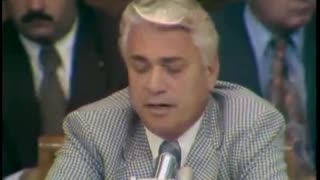 6:37:17
6:37:17
The Memory Hole
28 days agoNixon Impeachment Hearings Day 6 (1974-07-29)
444 -
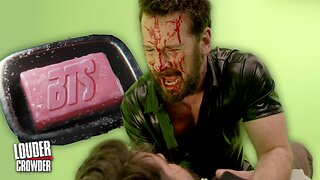 59:29
59:29
Steven Crowder
4 hours agoCrafting Crowder's Comedy Gold | Behind the Scenes
203K92 -
 2:06:44
2:06:44
Tim Pool
3 hours agoTHE END OF THE WEST, Will We Survive Without Christianity? | The Culture War with Tim Pool
100K61 -
 2:01:13
2:01:13
LFA TV
17 hours agoBODYCAM FOOTAGE OF TRAFFIC STOP! | LIVE FROM AMERICA 2.28.25 11AM
51.6K19 -
 1:23:10
1:23:10
The Big Mig™
5 hours agoGlobal Finance Forum From Bullion To Borders We Cover It All
20.6K4 -
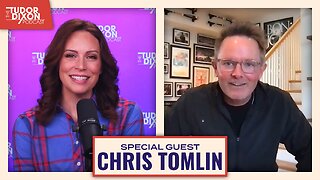 31:13
31:13
Tudor Dixon
3 hours agoThe Last Supper with Chris Tomlin | The Tudor Dixon Podcast
23.9K1 -
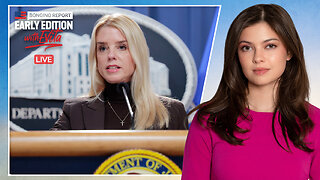 48:58
48:58
BonginoReport
5 hours agoFake Epstein Files Fallout + Will Cain on the Government’s Internal Civil War (Ep.150) - 02/28/2025
132K273 -
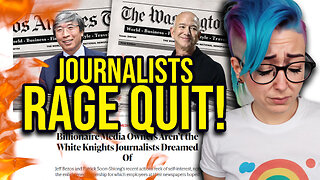 22:54
22:54
Clownfish TV
13 hours agoJournalists are RAGE QUITTING! Mainstream Media's Free Ride is OVER!
29.1K8 -
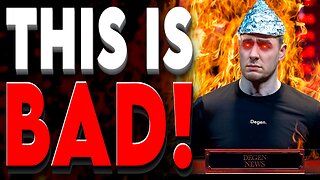 3:25:28
3:25:28
Matt Kohrs
11 hours agoMarket Crash, Inflation Report & Payday Friday || The MK Show
73.3K9 -
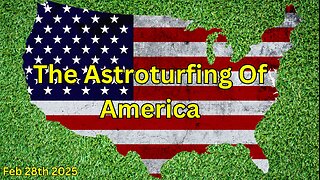 2:59:07
2:59:07
Wendy Bell Radio
8 hours agoThe Astroturfing Of America
97K59